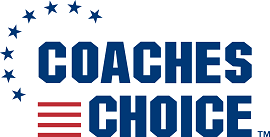Harold R. “Tubby” Raymond and Ted Kempski via Coaches Choice Football Coaching Library
ATTACKING THE DEFENSE
The wing-T philosophy takes advantage of the adjustments a defense must make to compensate for the wing’s flanking angle. For example, the seven man front must adjust its secondary to the wing, which, in turn, weakens the opposite flank and makes it vulnerable to the weakside. The wingback alignment tends to widen the eight-man front, making it vulnerable off-tackle and between the tackles. The three-deep secondary scheme must tighten its alignment and play man-to-man principle in order to get adequate support on the perimeter. A three-deep secondary which moves to a man-to-man coverage alignment on the wingback becomes extremely vulnerable to the weakside running game.
The wing-T also benefits from an option attack. The wing-T has the option available as a weapon from the trap option series, the speed-lead option series, the straight-dive option series, and the fullback slant or belly series. Because the wing-T option attack is not a triple option, practicing the option attack does not consume too much of the available practice time. Even though the option does not involve the double read of the triple option, all of the option series are valuable weapons to attack the outflanked defensive perimeter.
Threatening the defensive flank adds a third dimension for the defensive front to consider and provides an aspect of misdirection that is nonexistent in some offensive systems. Meanwhile, the defense must also consider the wing-T flank attack from the waggle and the keep-pass series, with the quarterback moving off the line of scrimmage.
Formations create angles. The wing-T formation effectively supports this statement. The wing forces every defense to make an adjustment through its alignment spread. One defensive flank or another is vulnerable to the angles created by the wing-T formation. In considering the point of attack against a defense, the wing-T coach should first inspect the defensive adjustment to five basic flanks:
Tight end and wing
Spread end and slot back
Spread end and diveman
Tight end and diveman
Short side and diveman
These five flanks are available through every formation in the Delaware wing-T system. When selecting a defensive point to attack, the wing-T coach initially looks at the offensive strong flank. The wing-T coach evaluates the defensive alignment to the formation strength and assesses if the defensive adjustment to the wing is an effective adjustment. The bottom line is whether the defense is meeting the offensive strength with defensive strength. Among the factors that the wing-T coach should notice are:
How close is number 4 to the flank?
Has number 3 adjusted to the wing?
What is the level of commitment of number 3 to sealing the play inside?
Who will contain the flank on the perimeter?
Is ball action a factor for the flank containment on the perimeter—does
the three-deep roll up, does the four-deep invert?
What is the defensive adjustment to the end-over side?
How does the defense respond to motion toward a particular flank?
How does the defense respond to motion away from a particular flank?
The wing-T coach looks for defenders who have dual responsibilities. The nature of the wing-T is to confront these dual responsibility defenders with two options. When the defender chooses a particular reaction option, he is placed in conflict. The wing-T coach plans the attack so that either choice the defender makes places the defender in conflict. If the defender reacts to stop the trap, he places himself in jeopardy for a companion play to the trap. If the defender reacts to stop the sweep, he places himself in jeopardy for a companion play to the sweep. The point to remember is that defensive conflict leads to offensive success.
The wing-T coach obviously directs the flow of attack toward the offensive flank, which presents the most advantageous angle to place pressure on the opposing defensive flank. A successful wing-T plan will have only a handful of plays. In the Delaware wing-T system, this handful of plays is referred to as primary plays. All other plays in the successful wing-T game plan are extensions from the threat of the primary plays. The primary plays must be established (i.e., run successfully) in order for any other extension play to succeed.
Three main points of attack exist on each side of the center against any defense: between the tackles, off-tackle, and on the perimeter. A play that attacks between the tackles poses a conflict to the defender off-tackle. A play that attacks off-tackle poses a conflict to a defender either between the tackles or on the perimeter. A play that attacks the perimeter poses a conflict to a defender off-tackle. The attack of a specific area relates to the adjacent area.
You can find out more about and purchase the eBook that this article is from at: The Delaware Wing-T Running Game (Revised Edition)
